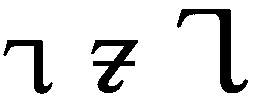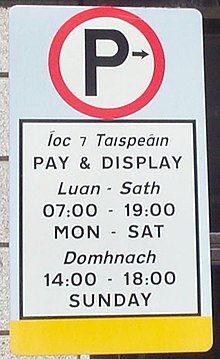Tironian notes
| Tironian notes | ||
|---|---|---|
 | ||
| Script type | shorthand
| |
| Creator | Unicode range | Et: U+204A, U+2E52; MUFI |
Tironian notes (Latin: notae Tironianae) are a form of thousands of signs that were formerly used in a system of
Note on sign counts

Tironian notes can be themselves composites (
History
Development
Before Tironian shorthand became popularized, literature professor Anthony Di Renzo explains, "no true Latin shorthand existed." The only systematized form of abbreviation in Latin was used for legal notations (notae juris). This system, however, was deliberately abstruse and accessible only to people with specialized knowledge. Otherwise, shorthand was improvised for note-taking or writing personal communications, and some of these notations would not have been understood outside of closed circles. Some abbreviations of Latin words and phrases were commonly recognized, such as those of
Scholars infer that

Controversy
This only of all Cato’s speeches, it is said, was preserved; for Cicero, the consul, had disposed, m various parts of the senate-house, several of the most expert and rapid writers, whom he had taught to make figures comprising numerous words in a few short strokes; as up to that time they had not used those we call short-hand writers, who then, as it is said, established the first example of the art.
Introduction
There are no surviving copies of Tiro's original manual and code, so knowledge of it is based on biographical records and copies of Tironian tables from the
There is evidence that Tiro taught his system to Cicero and his other scribes, and possibly to his friends and family, before it came into wide use. In "Life of Cato the Younger", Plutarch wrote that during Senate hearings in 65 BC relating to the first Catilinarian conspiracy, Tiro and Cicero's other secretaries were in the audience meticulously and rapidly transcribing Cicero's oration. On many of the oldest Tironian tables, lines from this speech were frequently used as examples, leading scholars to theorize it was originally transcribed using Tironian shorthand. Scholars also believe that in preparation for speeches, Tiro drafted outlines in shorthand that Cicero used as notes while speaking.[1]
Expansion
Isidore tells of the development of additional Tironian notes by various hands, such as Vipsanius, Philargius, and Aquila (as above), until Seneca systematized the various marks to be approximately 5000 in number.[7]
Use in the Middle Ages

Entering the Middle Ages, Tiro's shorthand was often used in combination with other abbreviations and the original symbols were expanded to 14,000 symbols during the Carolingian dynasty, but it quickly fell out of favor as shorthand became associated with witchcraft and magic[citation needed] and was forgotten until interest was rekindled by Thomas Becket, archbishop of Canterbury, in the 12th century.[10] In the 15th century Johannes Trithemius, abbot of the Benedictine abbey of Sponheim in Germany, discovered the notae Benenses: a psalm and a Ciceronian lexicon written in Tironian shorthand.[11]
In Old English manuscripts, the Tironian et served as both a phonetic and morphological place holder. For instance, a Tironian et between two words would be phonetically pronounced ond and would mean 'and'. However, if the Tironian et followed the letter s, then it would be phonetically pronounced sond and mean 'water' (ancestral to Modern English sound in the geographical sense). This additional function of a phonetic as well as a conjunction placeholder has escaped formal Modern English; for example, one may not spell the word sand as s& (although this occurs in an informal style practised on certain Internet forums and sometimes in texting and other forms of instant messaging). This practice was distinct from the occasional use of &c. for etc., where the & is interpreted as the Latin word et ('and') and the c. is an abbreviation for Latin cetera ('[the] rest').
Current

Just one Tironian symbol remains in common use today, the Tironian et (⁊, equivalent to
Recent historic

In blackletter texts (especially in German printing), it was still used in the abbreviation ⁊c. meaning etc. (for et cetera) throughout the 19th century.[citation needed] However, as not all typesets included a sort for the ⟨⁊⟩ character, the similar R rotunda ⟨ꝛ⟩ was substituted (which produced ꝛc.).
Support on computers
The use of Tironian notes on modern computing devices is not always straightforward. The Tironian et ⟨⁊⟩ is available at U+204A ⁊ TIRONIAN SIGN ET, and can be made to display (e.g. for documents written in Irish or Scottish Gaelic) on a relatively wide range of devices: on
Some applications and websites, such as the online edition of the
A number of other Tironian signs have been assigned to the
Gallery
-
"Letter of Consolation for Departing Warriors", 9th century
-
Psalm 68. Manuscript, 9th century
-
Tironian note glossary from the 8th century, codex Casselanus. "Notae Senecae", Seneca's notes.
-
R rotunda substituting for Tironian et in the abbreviationetc.at the end of the nobility title list. 1768
-
Irish Green postbox at Adare, County Limerick, with the P⁊Ꞇ (P&T) logo
See also
References
- ^ a b c d e f g h Di Renzo, Anthony (2000). "His Master's Voice: Tiro and the Rise of the Roman Secretarial Class" (PDF). Journal of Technical Writing & Communication. 30 (2). Archived from the original (PDF) on 8 July 2016. Retrieved 31 July 2016.
- ^ Job, Barbara. Schierholz, Stefan J. (ed.). "Kürzel" [Shorthand]. Wörterbücher zur Sprach- und Kommunikationswissenschaft (WSK) Online (in German). Retrieved 22 January 2023.
- OCLC 301255530.
- ^ OCLC 11943552.
- OCLC 2996309.
- ^ Dio Cassius. Roman History. 55.7.6
- ^ a b Isidorus. Etymologiae or Originum I.21ff, Gothofred, editor
- ^ Plutarch (1865). Plutarch's Lives. Vol. IV. Translated by Dryden, John; Clough, Arthur Hugh. Boston: Little, Brown, and Company. p. 393.
- S2CID 145385697.
- ^ Russon, Allien R. (15 August 2023). "Shorthand". Encyclopædia Britannica Online. Retrieved 1 August 2016.
- The Ciphers of the Monks: A Forgotten Number-notation of the Middle Ages.
- ^ Dwelly, William; Robertson, Michael; Bauer, Edward. "Am Faclair Beag – Scottish Gaelic Dictionary". Faclair.
- ^ "Scottish Gaelic Keyboard". Microsoft Learn. 8 December 2022. Retrieved 15 April 2023.
- ISBN 978-0903204-21-7.
- ^ Cleminson, Ralf; Baranov, Victor; Rabus, Achim; Birnbaum, David; Mitlas, Heinz (2010), "Proposal for a unified encoding of Early Cyrillic glyphs in the Unicode Private Use Area", Scripta (8–9/2010): 9–26
External links
- Wilhelm Schmitz: Commentarii notarum tironianarum, 1893 (Latin)
- Émile Chatelain: Introduction à la lecture des notes tironiennes, 1900 (French)
- Karl Eberhard Henke: Über Tironische Noten Manuscript B 16 of the Bibliothek der Monumenta Germaniae Historica, c. 1960 (German) (See 33. within for examples of composite Tironian notes.)
- Martin Hellmann: Supertextus Notarum Tironianarum Online dictionary of Tironian notes, based on Schmitz 1893 (German)





